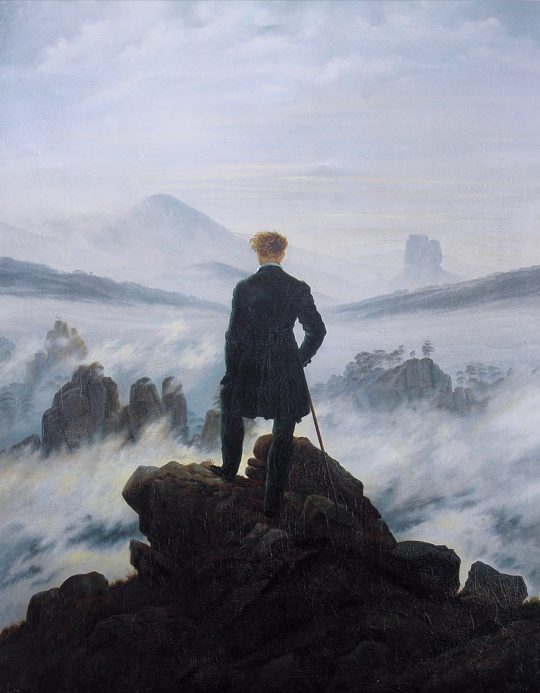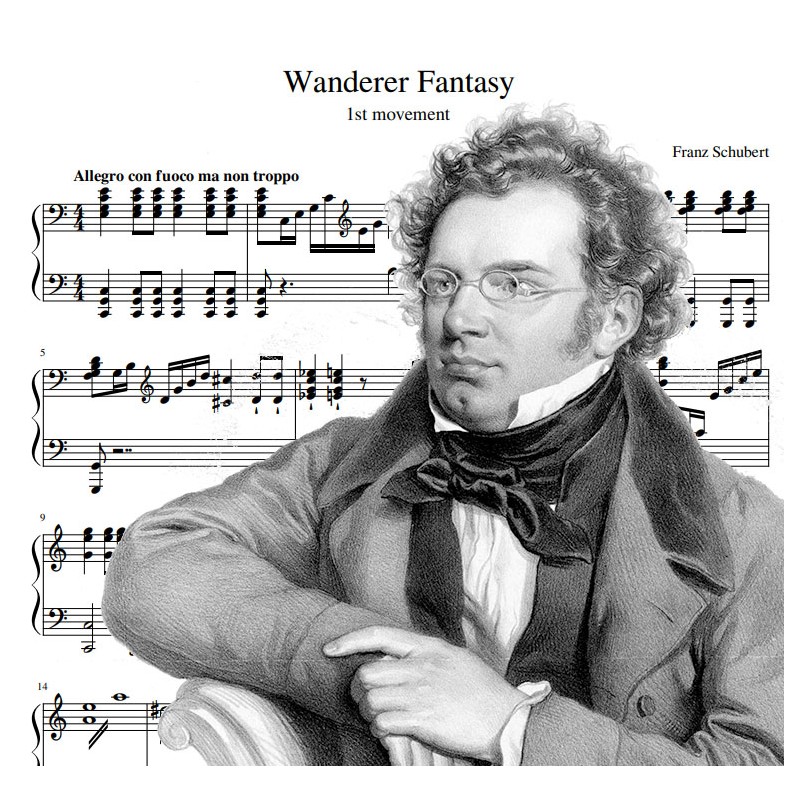Composed 1822; 23 minutes
As titles go, the Wanderer Fantasy is poetic, but misleading. Its origins start with Der Wanderer, a song that Schubert wrote at the age of 19, which quickly became one of his most performed songs. The innovative piano work followed six years later. Its recurring musical theme comes from the song The Wanderer, where the lines read those quoted above. This song forms the basis of the reflective slow movement variations (Adagio) of Schubert’s Fantasy. Schubert, however, had nothing to do with the nickname, ‘Wanderer’; it only became attached to the piano work after his death. The term ‘Fantasy’ similarly does little to help us grasp Schubert’s sophisticated structure, although the later F-minor Fantasy, one of the masterpieces of the four-hand medium, shares some of its structural innovations. Schubert’s Fantasy plays continuously, with no break between its four sections. These mirror both the four movements of a piano sonata and, simultaneously, the sections of an individual sonata form structure. The structure is condensed, however, particularly the first movement and finale, with each movement adding to the cumulative impact of the whole.

Caspar David Friederich’s celebrated Wanderer above the Sea of Fog, c1818
Binding the entire work together is the musical theme from Schubert's song, a fragment of which is heard at the outset. Nothing could be more strikingly uncomplicated: a series of C major chords, followed by an arpeggio based on the same notes. Yet the entire work grows from this fundamental idea, representing a formidable act of creativity which was to profoundly influence generations to come. Each movement is based on either a melodic transformation of the theme or on a transformation of its dactylic rhythm, harmony and even texture. The recurring ‘hammering’ rhythm can be heard in all four movements, above all in the finale, a monumental fugal structure that demands the utmost brilliance from the performer.
Both the pianistic virtuosity and the notion of thematic metamorphosis to provide unity throughout a four-movement piece of music were reasons why Franz Liszt was drawn to the Wanderer Fantasy. Its influence lies at the heart of his own B minor Sonata and the concept of the symphonic poem which he established in the 1850s, and which many other composers seized upon as the 19th century progressed. Liszt even produced three versions of Schubert’s Wanderer-Fantasie, the third giving us the closest thing we have to a Schubert piano concerto. In all versions, Schubert's Wanderer Fantasy remains a supreme example of romantic piano writing at its best, and the first of his large-scale compositions to be published.

Here the sun seems so cold to me,
the blossom faded, life old;
and what they say has an empty ring.
I am a stranger everywhere.
from Schubert’s song Der Wanderer – text by Georg Philipp Schmidt von Lübeck (1766-1849)